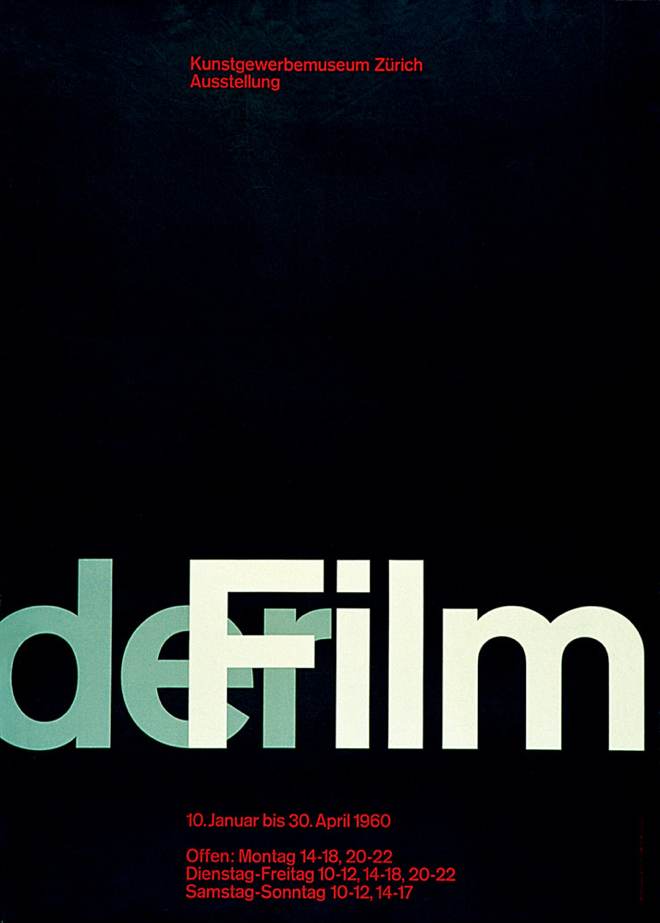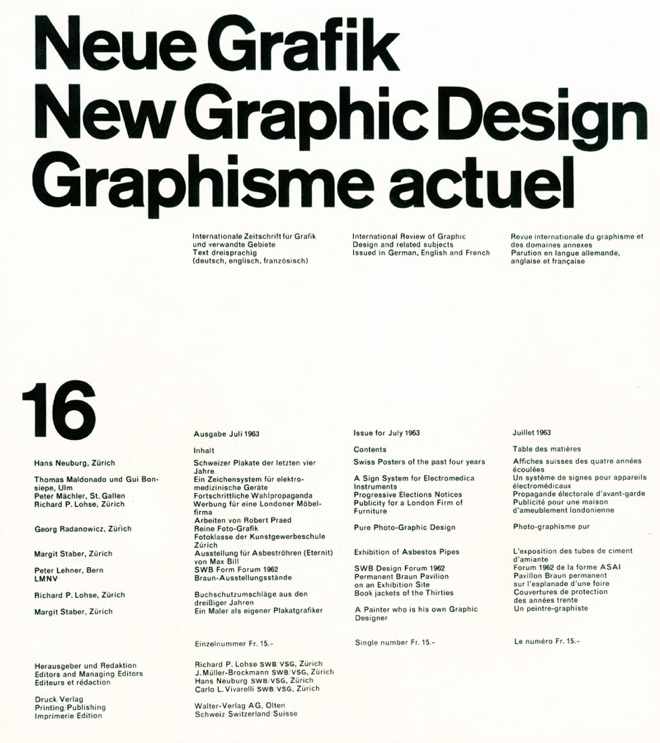Need timeless, modern design inspiration?
The International Style movement, or Swiss Style, was a powerful design movement in the 1940s and 1950s which brought minimal, aesthetic design to the world stage. International Style impacted the world in a powerful way; simplicity, clean lines, minimalism, and modernism became a wonderful alternative to the style of the day. The stye was the basis of much of the development of graphic design during the 20th century; the style favored simplicity, legibility, and objectivity.

Of the many contributions to develop from the two schools were the use of sans-serif typography, grids, and asymmetrical layouts. Also stressed was the combination of typography and photography as a means of visual communication. The primary influential works were developed as posters, which were seen to be the most effective means of communication.
One important figure of the International Style movement was Josef Müller-Brockmann. Brockmann was a Swiss graphic designer and teacher who studied architecture, design and the history of art in Zurich. In 1936, he opened his Zurich studio specializing in graphic design, exhibition design, and photography. During his career, he became well known for his concert posters, editorial work for New Graphic Design, and his appointment as a European design consultant to IBM.

He is recognized for his simple designs and his clean use of typography (notably Akzidenz-Grotesk), shapes and colours which inspire many graphic designers in the 21st century.
Müller-Brockman was author of several books on design and visual communication.
According to Brockmann, “Order was always wishful thinking for me. For 60 years I have produced disorder in files, correspondence and books. In my work, however, I have always aspired to a distinct arrangement of typographic and pictorial elements, the clear identification of priorities. The formal organization of the surface by means of the grid, a knowledge of the rules that govern legibility (line length, word and letter spacing and so on) and the meaningful use of color are among the tools a designer must master in order to complete his or her task in a rational and economic matter.”

Brockmann adhered to the methodology of form following function. He analyzed the purpose of his design and then decided on aesthetically pleasing forms which accomplished his objectives. To some, this type of function first mentality is seen as a hindrance to creativity. Many artists in the Post Modern movement became sick of grids, functionality, and minimalism. But artists like Brockmann and his peers argued that the purpose of a design must come before the aesthetics. It’s only when we understand the intended purpose of a design that we can find creative ways to accomplish the purpose. Brockmann believed that functionality and grid systems enforced creativity instead of hindering it. With a specific purpose in mind, a design comes together more quickly than focusing on aesthetics first.
Brockman also said, “The greatest works of art impress through their balance, their harmony, their proportions, all of which can be measured. That is one of the reasons why paintings, sculptures and buildings that are thousands of years old – by the Egyptians, Chinese, Assyrians and so on – are still fascinating to us today. Mondrian, on the other hand, did not use measurements and therefore took a long time to do a painting. However, few artists possess as much intelligence, sensibility and intuition as Mondrian.”

Brockmann’s focus on balance, harmony, and proportions created measurable effect on his audience. His designs were aesthetically beautiful and functionally impressive. It is impossible to view a Brockmann poster and not instantly understand the purpose of the design.
Brockmann also spoke about stretching himself as an artist:
“I wanted to explore the limits of my artistic ability. Until I was 30 I had been trying out various styles and techniques to find out where my talent might lie. I had quite a lot of apparent success with my illustrative work, but as a result of my ruthless self-critical analysis I saw that I possessed no essential artistic talent beyond the ordinary, and the creativity of a mediocre person is of no general interest. You can’t learn to become an artist, but you can learn to become a useful graphic artist. Intensive study of typography will reveal its laws, and the same holds for photography and compositions using typographical, photographic and graphic elements.”
Though Brockmann felt he was not an illustrious artists, his work graphic design has changed the world. The rules of grids, functionality, and minimalism contained in his work continues to impact the art world today.
If you are in need of modern, minimal European furniture, we’d love to help you with you search. You can browse our featured brands and product lines here: tangibleinteriors.com.
Sources: Wikpedia, Eye Magazine
